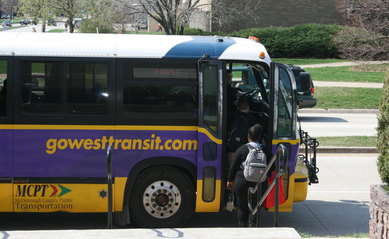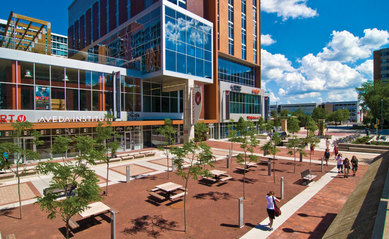Campuses as Community Catalysts
If you haven’t been living on a remote island lately, then you’ve likely come across at least one article questioning the value of higher education. Publications large and small, from national newspapers to local journals, have published pieces weighing in on the benefits of a college education when compared to the costs. These articles typically focus on the return on investment (ROI) of higher education to an individual. One topic that has received far less coverage in the media is the value that these same institutions contribute to their respective communities.
Across the United States, institutions of higher education serve a strategic role as one of the key catalysts driving economic activity and urban reinvention within communities; and this role is not just reserved for public research powerhouses. In the book The New Geography of Jobs, Enrico Moretti suggests that the presence of a college or university in a city is associated on average with a better-educated labor force and higher local wages. An institution of higher education typically helps to increase the supply of college graduates in a region, both by educating some and attracting others from outside. He also suggests that this positively contributes to the business activity in a region, the knowledge spillover from academic research that encourages innovation, and improved health care options through the presence of teaching hospitals and clinics.
For example, Wheeling Jesuit University, a small private institution in Wheeling, West Virginia, is in the process of transforming a long vacant downtown department store into a center for graduate-level studies in physical therapy. In addition to academic space, the facility is programmed to include a free community clinic at street level and student housing on upper floors. This proposed investment is slated to serve as the first step in the development of a living-learning village in downtown Wheeling. Initial development efforts by WJU have already generated significant excitement in a city that has witnessed very little urban investment in recent years.
As a society, we should reflect upon the role universities and colleges play within our communities as we weigh the value of higher education. What would our communities be without these institutions serving as catalysts of innovation and economic activity? We should broaden the discussion on value to the individual to also consider the impact at a local, state, and federal level. At a time when state and private investment in higher education has dropped to a severe low, we should ask ourselves what the future holds if we continue on this trajectory. The next time you pass by your local institution, I encourage you to think for a minute about the contributions it makes to your community. I suspect your thoughts will span a wide-ranging list of cultural, economic, health, and educational benefits.
Over the next few months, I’ll be profiling ways in which institutions of higher education serve as powerful economic and cultural engines within their local communities. Be sure to check back for the next post in this series, which will highlight ways in which institutions are leading the charge towards improved sustainability.
Be sure to read the next post in this series, which highlights ways in which institutions are leading the charge towards improved sustainability.



